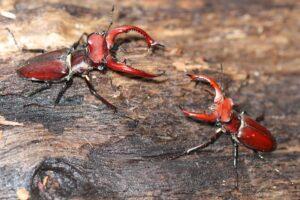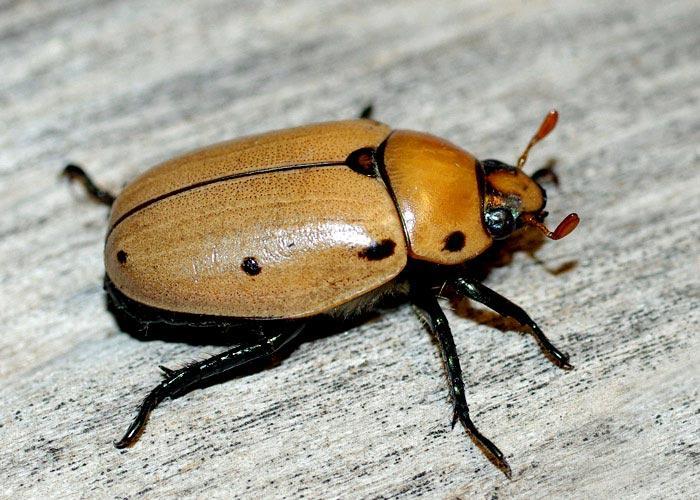Giant Stag Beetle (Lucanus elaphus)
Updated on
17/11/2022The giant stag beetle can be identified by its hefty body and huge mandibles. American stag beetle and elephant stag beetle are its other common names. They are attracted to light just like moths making them wander close to homes or buildings. Their specific name can be attributed to their large antler-like jaws, with elaphus being the Greek word for a stag.
Though the giant stag beetle is not endangered, habitat loss could threaten its existence. The conservation of lowland deciduous forests with abundant rotting logs lying undisturbed on the ground could help address the concern.
Scientific Classification
- Class:Insecta
- Order:Coleoptera
- Family:Lucanidae
- Genus:Lucanus
- Species:L. elaphus
Conservation Status
Description
The size of the insect is about 2.5 inches (6.4 cm), making it the largest in the Stag family. There are big, curved mandibles resembling pincers at the front of the male’s head. The mandibles on the female are shorter and look ordinary. Though it has pale wings tucked under the chestnut-colored elytra (wing cases), the beetle is found chiefly on the ground. The body color varies between black and maroon.
Distribution: Parts of North America and throughout western, including Britain, but not Ireland.
Habitat: On or near oak trees, rotting logs, or tree stumps in deciduous forests.
Do They Bite/Sting: Yes.
Lifespan: 4-8 years.
Predators: Foxes, cats, crows, and kestrels.
Conservation Status: Not Evaluated
Behavior and Characteristics
Diet
They consume leaking tree sap, rotting fruit, and sticky, sweet honeydew secreted by aphids.
Life Cycle
1. Egg Stage
The females lay fertilized eggs in decomposing tree trunks and logs.
2. Larva Stage
The big, white, C-shaped larvae take 3-7 years to mature before molting into adults. The stage can be extended in case of extreme cold weather. They feed on decaying wood under the ground.
3. Pupa Stage
The pupae are lodged in large cocoons in the soil. This stage lasts for 7-9 months.
4. Adult Stage
The males fight with individuals of the same sex over mating with females using their large mandibles. A flat area around the base of the mandibles on the male’s head almost resembles a shield. The adults are most active at night as the darkness helps them camouflage against predators. They live for just a few months.
Care Sheet
Enclosure size: The enclosure should be thrice the length of the beetle in length, twice in width, and twice its height. You should double the length and width of the cage for every additional beetle.
Substrate: Peat and soil mixture in 1:1 ratio is suitable. Hay and coir are good non-soil alternatives.
Temperature: 68-77°F is preferred.
Humidity: The housing should be kept moist by using a bottle sprayer at regular intervals.
Feeding: Slices of fruits like orange, apple, banana, or pineapple cut to sizes quarter of the body size.
Source
1.bp.blogspot.com, xtraordinarypets.com, lh5.ggpht.com, srs.fs.usda.gov, reddit.com, bugguide.net















